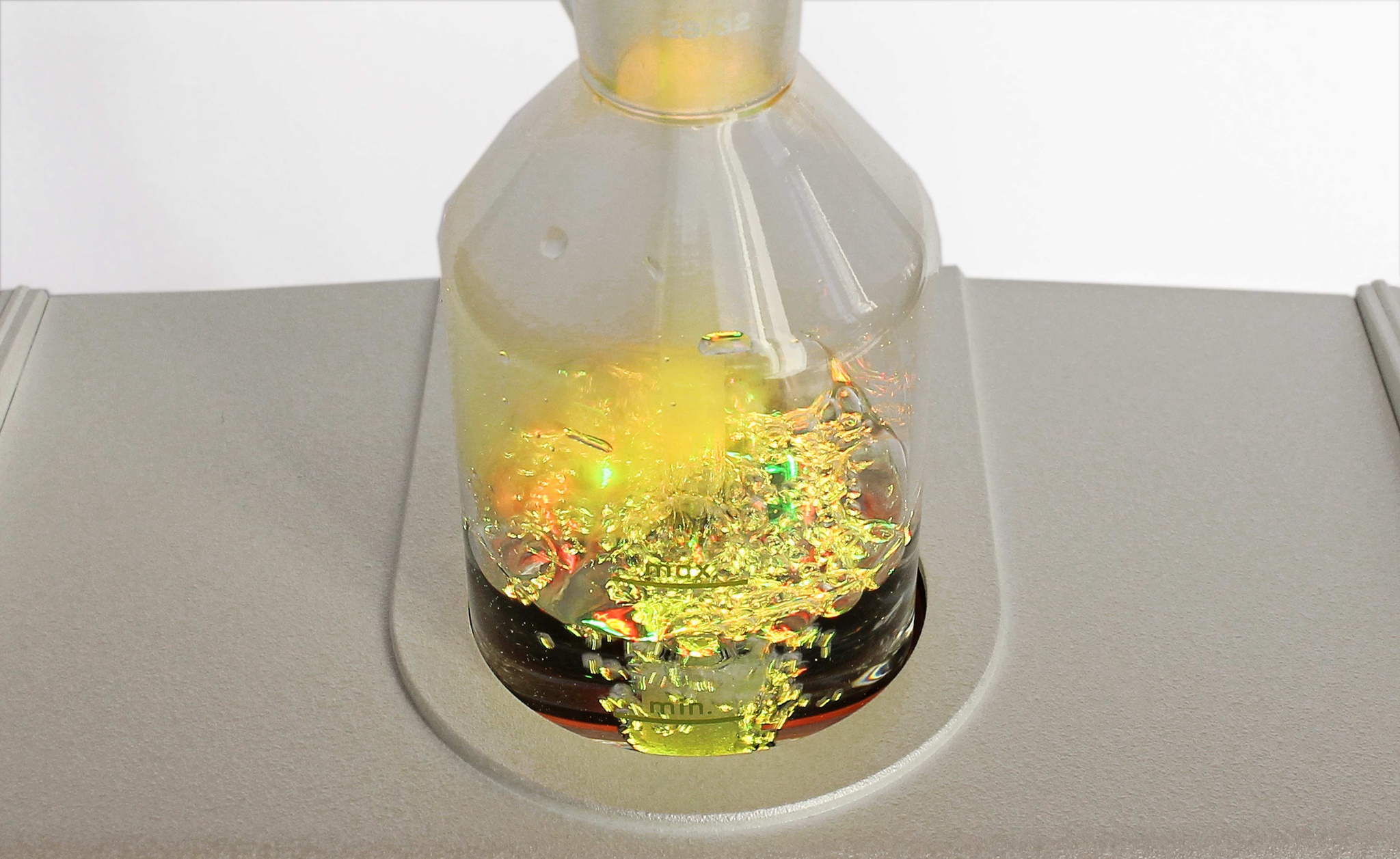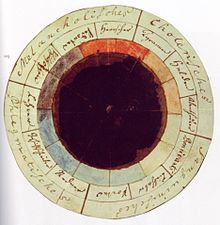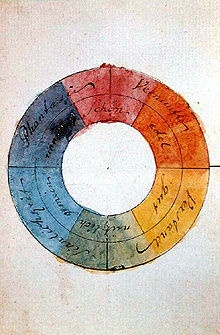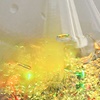Information about OET Color Light Therapy

Targeted colour therapy can reduce regulatory disorders and restore the necessary balance. This is because our organism absorbs light with its colour components such as food. A balanced colour balance plays an important role for our state of health.
A long-term lack of light with special wavelengths leads to regulatory disturbances of the superordinate control systems. In the further course this leads to functional disturbances of the subordinate systems such as psyche, organs and organ systems. Thus, colour therapy can be used very individually and effectively.
The role of colours

Colours have been used in medicine for centuries. Prof. Becher, a physician from Heidelberg, has provided further fundamental insights into the effect of colours on humans. In the 1950s, he worked on investigations into the connection between the vegetative nervous system (VNS) and the perception of the eye. In the retina of the eye, he discovered "multipolar cells", outposts of the diencephalon, which are responsible for the colour effect on the brain.
Since psyche, endocrinum (hormone system), immune system and vegetative system are directly related and interact with each other, it is clear that different frequencies of the colour waves affect the eye, the skin and the psyche up to the organs. This can be measured by HRV analysis (heart rate variability).
Colours and their effect

The colours are usually divided into pure colours and mixed colours according to the order of Goethe's colour circle (see illustrations on the left). The three pure basic colours red, yellow and blue (RGB) together with the three mixed colours of the first order form a star or circle, in the right half of which the warm colours are to be found, in the left half the cold colours. Colours have a wide variety of effects on people and many of them are now common knowledge.
Red: Drive & Energy
Red is associated with certain degenerative processes and is therefore preferably used when our life forces are weakened. Of all colours, it has the greatest penetrating power, increases our energy level and activates our mental power.
Red has a strong influence on the vegetative nervous system - especially the sympathetic nervous system - by activating and stimulating it. Red increases sensuality, conscious experience, feeling and the expression of uninhibited passion. On a mental level, the energy of the colour red gives us a strong will, determination and stamina.
Due to the strong effect of this colour, only short applications should be chosen to achieve the desired activating effect. Red is also therapeutically effective for children who learn slowly and sluggishly, for hypotonics (too low blood pressure) or anaemia. Red is a stimulating colour that activates and stimulates!
Orange: Vitality & Joie de Vivre
Orange (a mixture of red and yellow) is known as a source of strength after physical or mental exhaustion. It represents vital strength, activity and brings serenity and joy.
Orange is the colour of joy, of fun, of conviviality. It emphasizes security, cosiness and emotional warmth. Pessimism, dissatisfaction, gloom, depression, lack of drive and fear (in connection with changing blue radiation) are positively influenced.
Orange relaxes and activates at the same time people who are frozen in the grey everyday life. Orange promotes appetite, digestion and strengthens the stomach.
Yellow: Concentration & Nerve Power
The colour yellow relates to the lymphatic area, the intellect, the left hemisphere and the glandular system. Yellow activates thinking and feeling, strengthens the nerves and promotes comprehension. Yellow improves the ability to concentrate and perceive and relieves the strain on the eyes - ideal for driving a car and as computer glasses.
In addition, yellow helps to see things in life in a more relaxed way. Yellow has a calming effect on emotions and digestion, especially on the stomach. Yellow promotes mental openness and an optimistic attitude towards life. Yellow stimulates the joy of experimentation, mental development and motor skills - as well as appetite.
Yellow glasses are very suitable for children: Yellow helps to increase the eagerness to learn as well as the ability to concentrate and remember.
Green: Balance & Harmony
Green (a mixture of yellow and blue) is the colour of the centre and stands for balance, contentment and inner peace. In its perfect neutrality between all extremes, it has a calming effect without getting tired. Green frees the tissue from toxins and promotes excretion.
In colour therapy, green is a colour that balances the rhythm of the heart and kidneys. Green is indicated for tumours, ulcers, cysts, diabetes, eye diseases, bronchial asthma, bronchitis, whooping cough and joint inflammations. Green serves as a neutral healing colour, which does not cause any counter-reactions in case of physical complaints. Green calms the eyes and strengthens them for all other impressions.
Turquoise: Clarity & Understanding
Turquoise is cooling and refreshing, supports clear linguistic expression and clear communication from the heart. Creativity and spiritual realisation are positively influenced by the colour turquoise, feelings and mind come into harmony more easily.
On an organic level turquoise helps to rid the body of harmful substances. It is recommended to use turquoise in an environment with increased radiation exposure. Turquoise has a regulating effect on the thyroid gland. Turquoise is successfully used to treat allergies (hay fever) and inflammation.
Blue: Recreation & Relaxation
Blue is a cold colour that has a calming and relaxing effect. Blue is ideal for relieving stress (sympatheticotonia) and hecticness. It acts on the glandular and hormonal systems and counteracts heated processes: suppurations, pain, blood fullness can be regulated with blue, as can hemorrhoids, warts, certain heart diseases (hyperfunctions), high blood pressure and insomnia.
Blue relieves cramps caused by nervousness and loosens muscles, tendons and ligaments. Blue is used in colour therapy to treat stress-related migraines, acute neck problems, febrile diseases and acute back pain. Blue promotes and supports the parasympathetic nervous system (vagus) and is used for regeneration, recovery, energy build-up and repair processes.
Indigo: Clarity & Intuition
Indigo has a strong calming effect, which can promote the state of inner peace and deep relaxation. In case of excitement and overactivity, indigo harmonizes irregular breathing. Indigo supports the access to intuition, clarifies emotions and thoughts. Indigo supports meditation, promotes positive thinking and is able to expand consciousness. Indigo has a balancing effect, especially on eyes, ears and nose, in fever, nerve inflammation and exhaustion..
Purple: Inspiration & Spirituality
Violet (a mixture of red and blue) is known as the colour of meditation and stands for inward gaze, spiritual deepening and inspiration. Violet has a strong effect on the subconscious, awakening insight and cognition.
Organically, violet is connected to the spleen and the lymphatic system. Violet opens the consciousness for non-material experiences and promotes the synchronisation process between the left and right hemispheres of the brain.
Violet sets cleansing processes in motion - both in physical blockades and in psychological ambiguities, causes a balance of disharmonies and mediates between the polarities (opposites). Violet is used for pain, especially migraine, and promotes healthy sleep.
